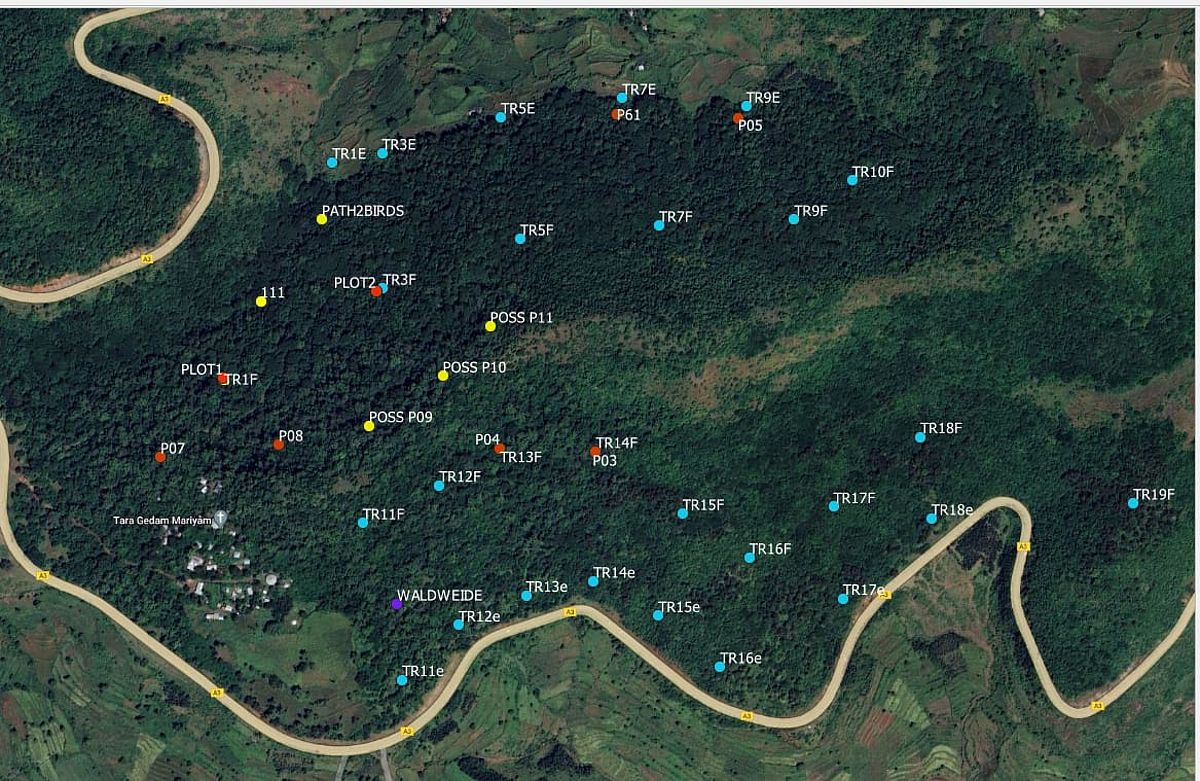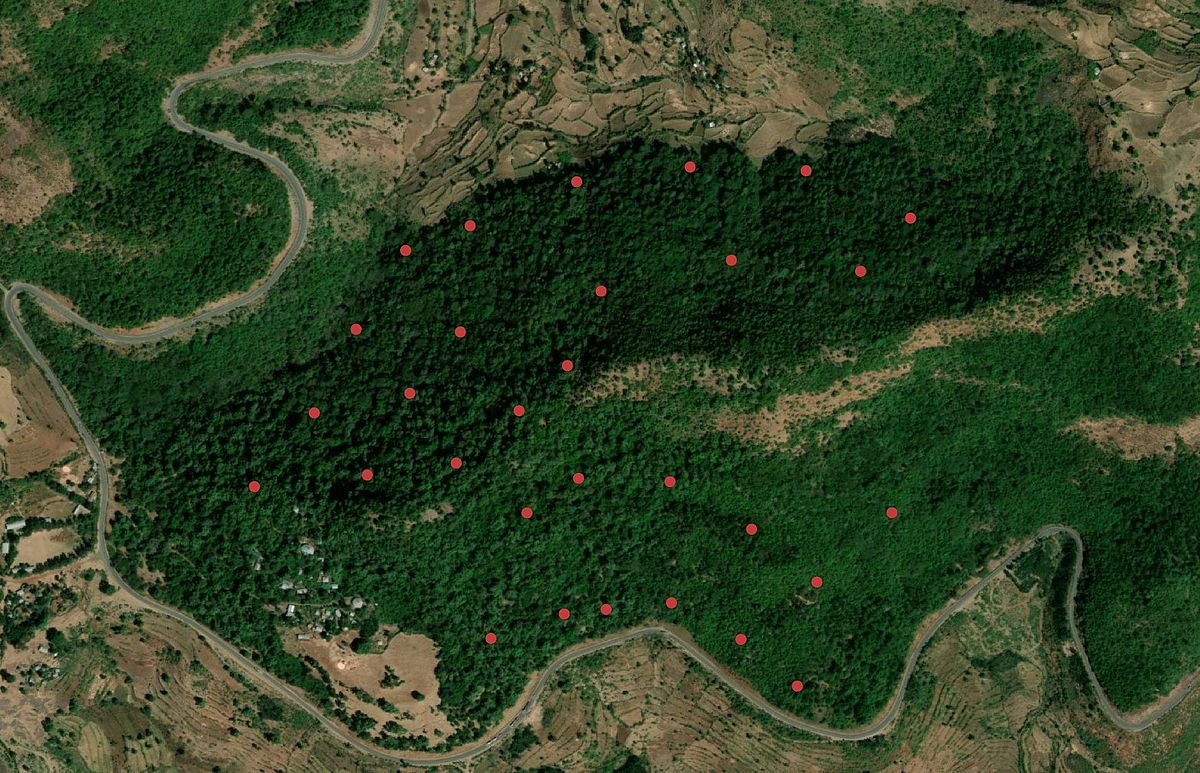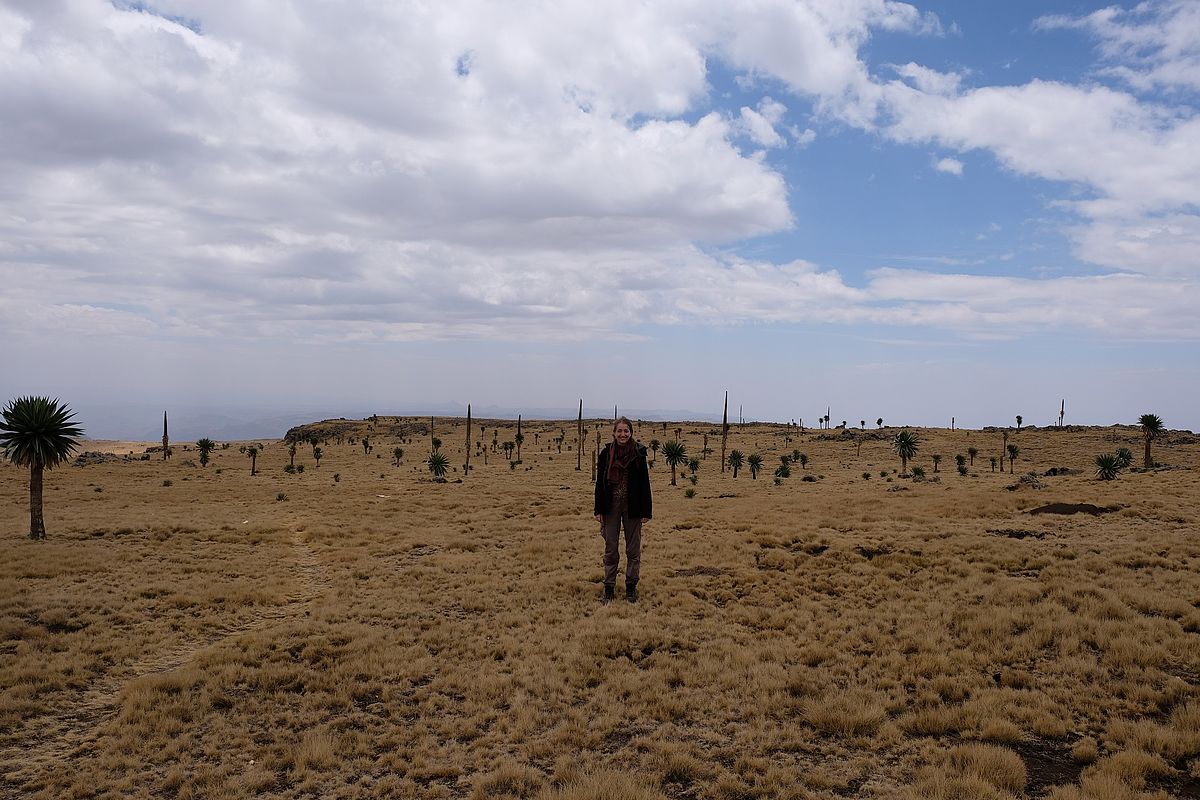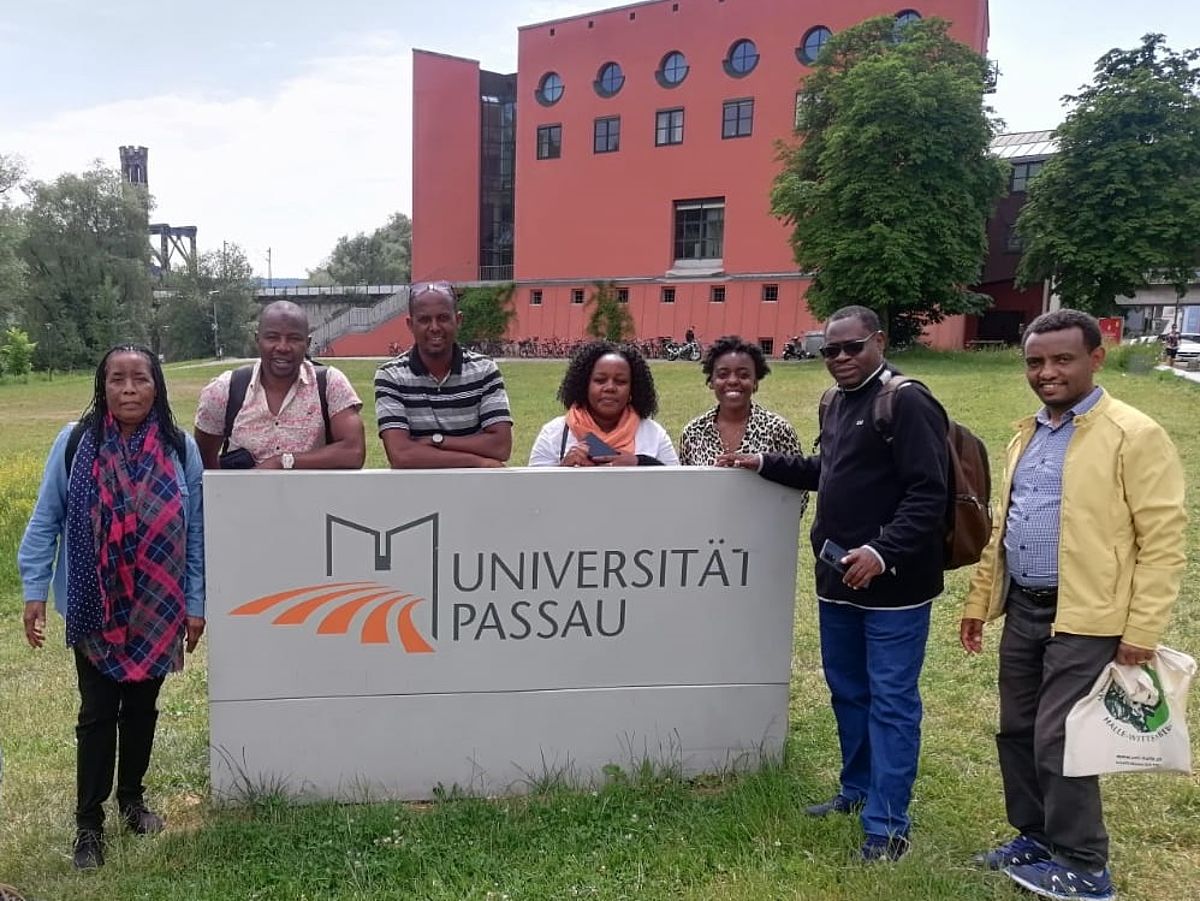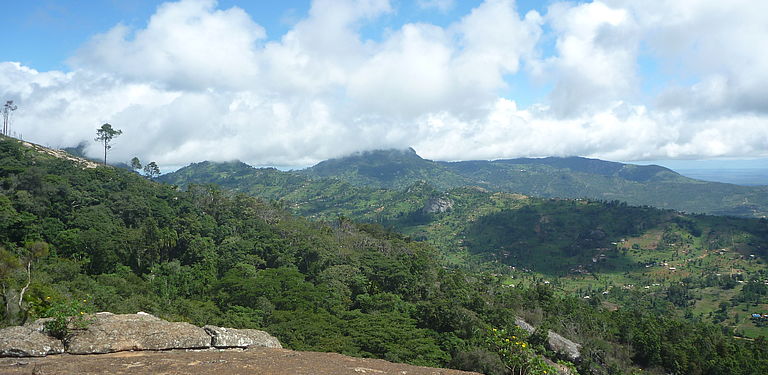The ten of us sit tightly packed together on the jeep's two rear benches. The car jumps and jerks as we wind our way upward until the surrounding landscape undergoes a slight transformation. Dust and stones give way to shrubs and trees. "That's already part of Tara Gedam," says botanist Solomon Girmay of Bahir Dar University. We twist our heads around to catch a first glance of the forest where we will be spending every day of our three-week stay
Given the large number of endemic species, vegetation assessments in Ethiopian forests are of particular importance and can help to document and conserve species diversity
Solomon Girmay, botanist at Bahir Dar University
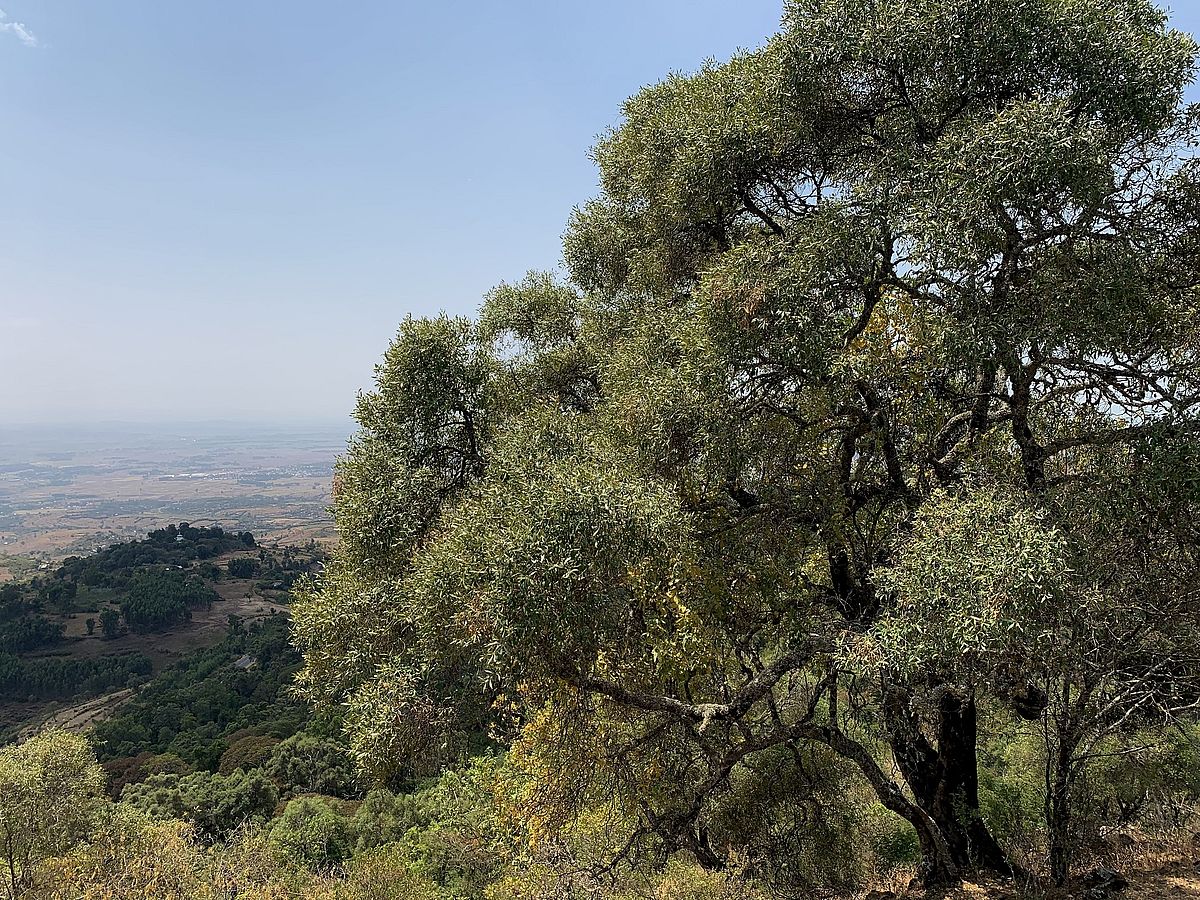
We are group of twelve students from Germany and Austria and just as many from Bahir Dar University, the capital of the Ethiopian province of Amhara and Ethiopia's sixth largest city, who met in the international DAAD-funded research network BioCult during an excursion to Ethiopia in April 2023. The project brings together researchers from Kenya, Ethiopia, Germany and Austria, who, with the support of students, are committed to studying the biodiversity, ecosystem functions and cultural significance of three different forest areas, two of which are located in Kenya and one in Ethiopia.
Equipped with measuring tapes and ropes, we stake out a total of thirty circular study sites known as plots, each with a radius of fifteen metres. We set out to identify the species occurring in these areas, count the individuals – the technical term for individual plants – and make a note of disturbance factors, like grazing, footpaths or logging. "Given the large number of endemic species, vegetation assessments in Ethiopian forests are of particular importance and can help to document and conserve species diversity" says botanist Solomon Girmay. We also measure the diameter at breast height and the overall height of the larger trees.
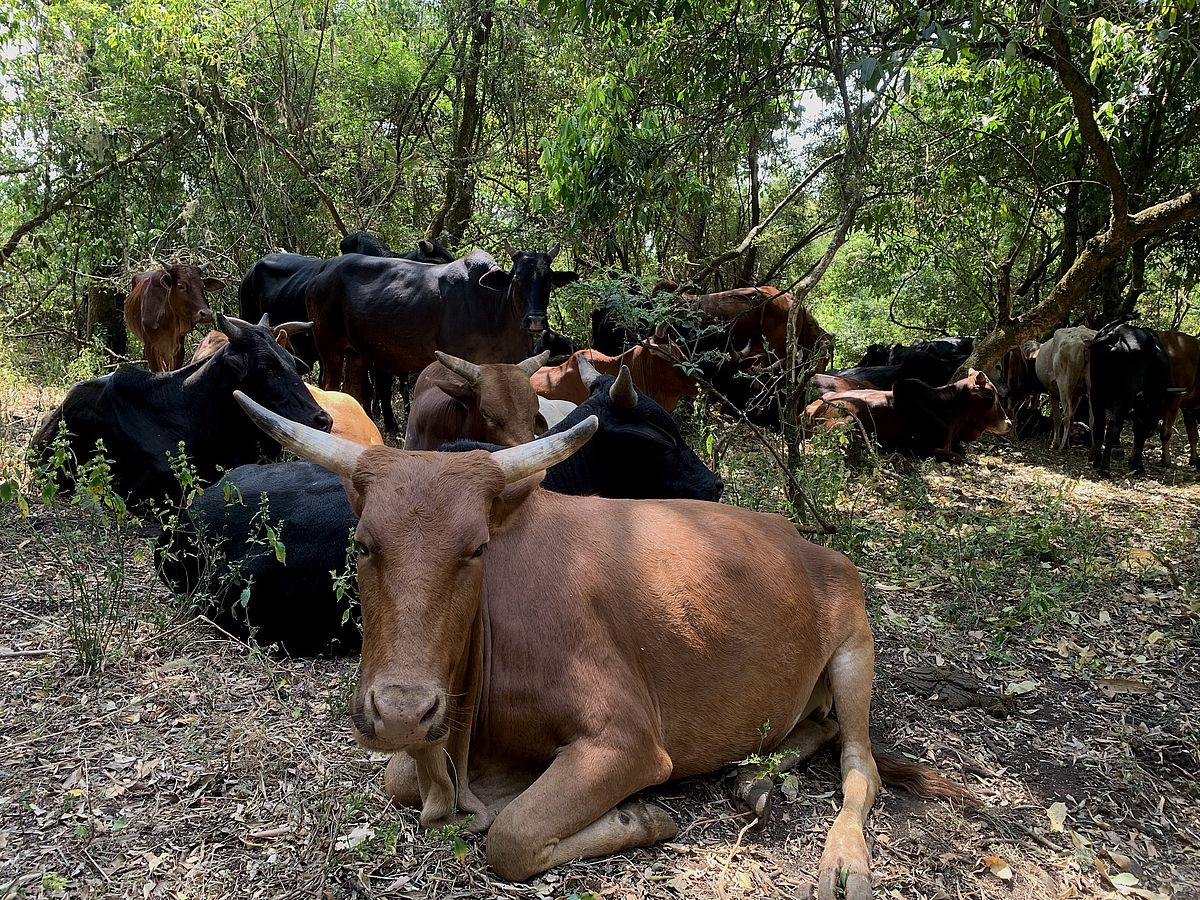
Head of the project is Professor Christine Schmitt who holds the Chair of Physical Geography with a focus on Human-Environment Research at the University of Passau. Besides me, there are four other students from Passau. Two of them are studying for a Master's degree in Geography as well: Andreas Biedermann and Zora Sabisch. Together, we assist our professor in the vegetation assessment. Joeta Ndwiga and Debarati Ganguly are Master's students in Development Studies and work on site in the social science work package. Using standardised surveys to collect information from the community living around Tera Gedam, they study the social and cultural interests in the church forest Tara Gedam and the current willingness to protect this forest.
Measuring forests to determine the carbon stock
Tara Gedam, as nearly all remaining Afromontane forests in the northern and central Ethiopian highlands, is a church forest and thus under the protection of the Ethiopian Orthodox Tewahedo Church. When monks guide us through the forest on day one, we notice the barren surrounding country where agriculture has displaced lots of wooded areas. We are once again reminded of how crucial it is to conserve the last remaining forest areas.
Stereospermum kunthianum and the view of the surrounding agricultural areas from Tara Gedam’s highest vantage point.
I find out soon enough that there is no time for German precision in field work. Not every tree is painstakingly measured with the clinometer, a tool that can be used to indirectly measure the height of trees. It often suffices for us to hold a five-metre pole up over our heads, and sometimes a comparison with surrounding trees does the trick. The research team requires the circumference and height to determine the biomass. They can then use the biomass data to compute the forest's carbon stock. Against the backdrop of global warming, this information serves as a key argument in discussions about forest conservation.
An international team of researchers, which included Professor Schmitt, has proven that tropical Afromontane forests store more carbon than previously thought. Our task is to document the current condition of the selected forest area and the protective mechanisms in place that are being impacted by social change. Using this and other data, the research team of the BioCult project will develop strategies for long-term forest conservation that take into account the needs of local stakeholder groups.
Professor Schmitt warned us that plans can hardly ever be implemented exactly as intended on site. Hence, we are not all that surprised but still a tiny bit disappointed when we realise in the forest that some of our research questions will not work. On our first forest tour, we see that nearly the entire area is affected by disturbances, including logging and grazing.
As we start out, the positioning of the plots presents us with a number of problems. The "forest edge plots" that we selected together with the working group are too far off. At other points, the slopes are too steep, making an assessment impossible. We are obliged to adjust the original plot distribution. Our professor sets out with a GPS device to search for new locations and manages to create a suitable new plot scheme by slightly altering the coordinates that had originally been envisaged.
At first, we only manage to complete two plots a day. We need time to get acquainted with one another and familiarise ourselves with the measuring methods. Gradually, we become proficient at our assessment work and settle into our roles: Karabeh, a Bahir Dar University student from the College of Agriculture and Environmental Sciences, measures the diameter at breast height and identifies the species together with Bahiru, a fellow student. Andreas, who also studies in Passau, measures the height and I take down the data. Although initially exciting, the field work gradually becomes routine. Our environs continue to intrigue us: Whilst we are doing our work, we hear strange sounding birdsong and are able to make out little monkeys through the tree crowns in the distance from time to time.
One last look at Tara Gedam from the side of the road.
When the last assessment day draws to a close, we pack up our equipment. Over a period of three weeks, we managed to measure 1,897 trees and documented their environment. Including the shrub and seedling assessments, the final data table now comprises 9,767 individuals. We turn around one more time to throw a last glance at "our" forest. With the data in our bags, we head back home and hope to have contributed to the conservation of this remarkable ecosystem.
Geography student Liesa Cosman was part of the BioCult project assessment team in March 2023 and is currently writing her Master's thesis about the carbon stock in Tara Gedam church forest at the Chair of Professor Christine Schmitt. She is also student assistant at the Executive Support Unit for Research Strategy and Science Communication. The above picture was taken in the Afroalpine zone of the Simien Mountains in northern Ethiopia at an altitude of nearly 4,000 metres.
The picture below was snapped in June at the University of Passau when six cooperation partners from Kenya and Ethiopia came for a visit as part of the BioCult project. They are: Marianne Maghenda, Taita Taveta University; Halimu Shauri, Pwani University; Solomon Addisu, Bahir Dar University; Maria Fungomeli, National Museums of Kenya, Coastal Conservation Unit; Joeta Ndwiga, student at the University of Passau; Maarifa Mwakumanya, Pwani University; Habtamu Assaye, Bahir Dar University (from left to right). Together with researchers from the University of Passau, the team participated in the Annual Meeting of the Society for Tropical Ecology (gtoe) held in České Budějovice, Czechia. The BioCult project was represented by the symposium "Biodiversity and people: the role of culture and tradition in biodiversity conservation". Photograph: Lena Wilde, Welcome Center.
Professor Christine Schmitt
How can I reconcile the conservation and utilisation of natural resources and biodiversity?
How can I reconcile the conservation and utilisation of natural resources and biodiversity?
Professor Christine Schmitt has been Chaired Professor of Physical Geography with a focus on Human-Environment Research at the University of Passau since April 2021. She is an active member of the scientific advisory board of the Society for Tropical Ecology (gtö) and of the BayWISS Joint Academic Partnership Life Sciences and Green Technologies and has experience in policy support at an international level.
BioCult project: Passau researcher studying biodiversity and biomass in the forests of Kenya and Ethiopia
Tropical forests are home to a remarkable diversity of species and often of major cultural significance to the people living there. However, many of these forests are being depleted and threatened by conversion into agricultural areas.








